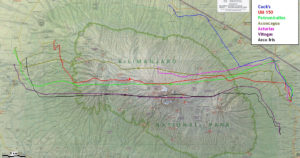Jesus regularly forms his followers, those whose hearts are poised to grow into his likeness. He just waits on us to make a move. The apprentice grows more like his master by observing and doing the things his master (trainer/mentor) does.
Jesus modeled the practice of praying, for instance. Do you, like me, ever wonder why so many preachers, teachers and scholars write and speak on the subject of prayer? Well, Jesus started it.
Jesus not only taught on prayer. He prayed. A lot.
A. W. Tozer notes that Jesus prayed early in the morning and, at times, throughout all the night. That he prayed both before and after the great events of his life, and prayed “when life was unusually busy”.
Wherever you and I happen to be just now on our discipleship journey, we too may come to him as his early ragamuffin followers did those centuries ago. Bringing before him our earnest appeal about talking with God,
“Lord, teach us to pray.”
Living one day at a time, enjoying one moment at a time* If we should search for a single line to sum up a fundamental disposition present in a New Testament disciple, we might begin with that phrase.
It was he who spoke of us walking alongside him, donning an ‘easy yoke’. It is Jesus who stirs the imagination, offering a word picture of fruit-producing branches. Each branch, each Christ-follower, draws a plentiful supply of life straight from him – the vine. One day at a time. . one moment at a time.
Through his own frequent rhythms of being present to his Father in prayer Jesus modeled the practice for any and every one signing on as his apprentice. The Lord Jesus, more than any other human, understood prayer’s non-negotiable nature. Endurance and flourishing (two longed-for aims of any meaningful life) find their fountain in direct union with God alone. Nothing else quite works.
I am afraid I have sometimes lacked the ‘sanctified ambition’ witnessed now and then in his early disciples when their hunger surpassed their timidity. “Lord, teach us to pray”.
Those of us who count ourselves as apprentices or apprentice wannabes can thank God every day that their appeal was made. “Teach us to pray” may rank as the most worthwhile request ever voiced by any person anywhere.
Apprentices learn by copying what they see in their teacher.
(c)2023 Jerry Lout


